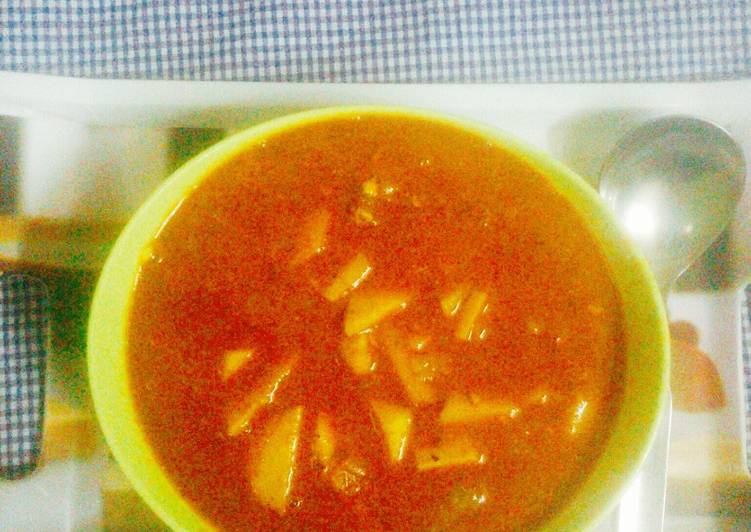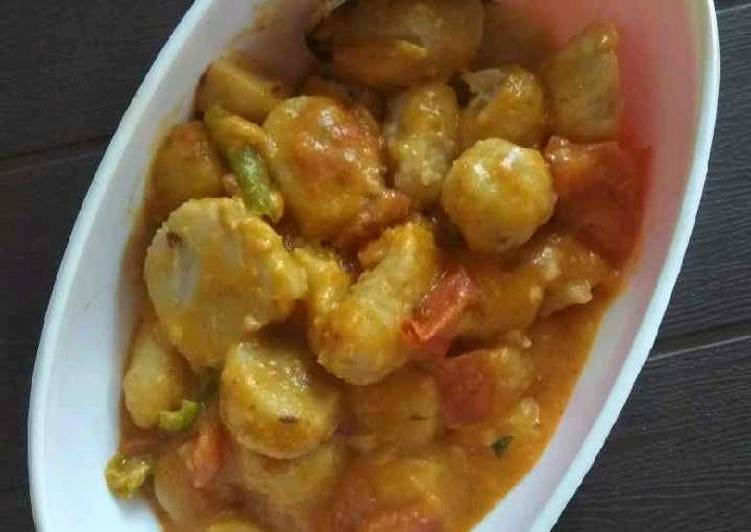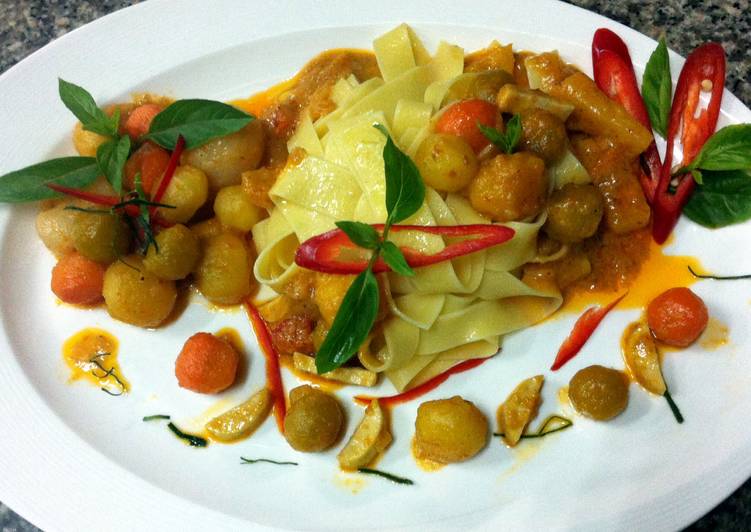
Hey everyone, it’s me, Dave, welcome to my recipe site. Today, we’re going to make a distinctive dish, taro root curry. It is one of my favorites. This time, I will make it a bit tasty. This will be really delicious.
Kerala Style Taro Root Curry uses Arbi which is widely used across India in various ways. This Kerala style Taro Root curry is made using fresh coconut and is classically served with steamed rice. Malabar tamarind is traditionally used as a souring agent, which also helps in destroying the allergens, if any, from the starchy tuber. The younger the roots are the thinner the skin will be.
Taro Root Curry is one of the most well liked of current trending meals in the world. It’s appreciated by millions every day. It is easy, it is quick, it tastes delicious. Taro Root Curry is something which I have loved my whole life. They’re nice and they look fantastic.
To begin with this particular recipe, we must prepare a few components. You can cook taro root curry using 13 ingredients and 12 steps. Here is how you cook it.
The ingredients needed to make Taro Root Curry:
- Get 200 gm Taro root (arbi)
- Take 2 tsp mustard seeds
- Take 15-16 garlic petals
- Take 4-5 whole & dried red chilli
- Get 1 big size tomato, chopped
- Prepare 1 tsp turmeric powder
- Prepare 1 tsp coriander powder
- Make ready 1/2 tsp jeera powder
- Take 1/2 tsp black pepper powder
- Get Salt as per taste
- Prepare 1/2 lemon, medium size
- Get 1 tsp fenugreek seeds(methi dana)
- Get Mustard oil as per requirement
Arbi or Arvi is one of the oldest cultivated plants and the root is highly rich in starch content besides containing calcium and iron. Arbi masala curry is a delicious and mouth-watering curry we prepare from taro root. The name arbi is actually the Hindi for taro or colocasia. Colocasia Curry or Chembu Ashtram- A nice comforting curry to be had with rice or 'Kanji' ( Rice Gruel / Porridge) Colocasia also known as Elephant-ear, Taro, Cocoyam, Dasheen, Chembu, and Eddoe in different languages.
Steps to make Taro Root Curry:
- Wash the arbi nicely with clean water.Now trasfer the arbi to a pressure cooker and add some water to it.Pressure cook for 1 whistle over high flame to boil the taro Root. Allow the pressure cooker to cool and then open the lid and take out the boiled arbi in a plate.Peel off all the boiled arbi
- Chop them into several pieces.
- Take the mustard seeds, garlic petals &whole dried red chillies in a mixer jar.Add 2 tbsp water to the jar and then grind them to form a fine paste.
- Now heat some mustard oil in a kadai &add methi seeds to it.After crackling &little colour changing then add ground paste to it.Stir &cook the paste for a few seconds.
- Now add all the powder spices and salt to it.Stir, mix and cook all the ingredients together for a few seconds
- Add the chopped tomatoes and again stir, mix and cook all the ingredients together till the tomatoes become soft and oil begins to separate.
- Now add chopped arbi or taro Root pieces. Stir and mix well.
- Then squeeze the 1/2 lemon.Mix it well.
- Now add water to kadai.
- Allow the gravy to come to a boil.
- Then cover the kadai with a lid and lower the flame to low level & cook taro Root Curry for 10 min.
- Turn off the flame after 10 min and transfer the taro Root Curry to a serving dish & serve it with chapati or paratha or rice.Enjoy this yummy taro Root Curry.
The name arbi is actually the Hindi for taro or colocasia. Colocasia Curry or Chembu Ashtram- A nice comforting curry to be had with rice or 'Kanji' ( Rice Gruel / Porridge) Colocasia also known as Elephant-ear, Taro, Cocoyam, Dasheen, Chembu, and Eddoe in different languages. The smaller sized 'baby' roots are best for this curry. Nadan Chembu Astharam, is a traditional Kerala style taro root curry made with coconut and curd (yogurt) and lastly seasoned with coconut oil. Typically nadan chembu (organic backyard taro root) is used, preferably smaller size (tender ones), though full grown bigger ones can be used, the baby ones (kochu chembu) are more tastier for astharam.
So that’s going to wrap it up for this special food taro root curry recipe. Thank you very much for your time. I’m sure that you can make this at home. There’s gonna be more interesting food at home recipes coming up. Remember to bookmark this page in your browser, and share it to your loved ones, friends and colleague. Thank you for reading. Go on get cooking!

